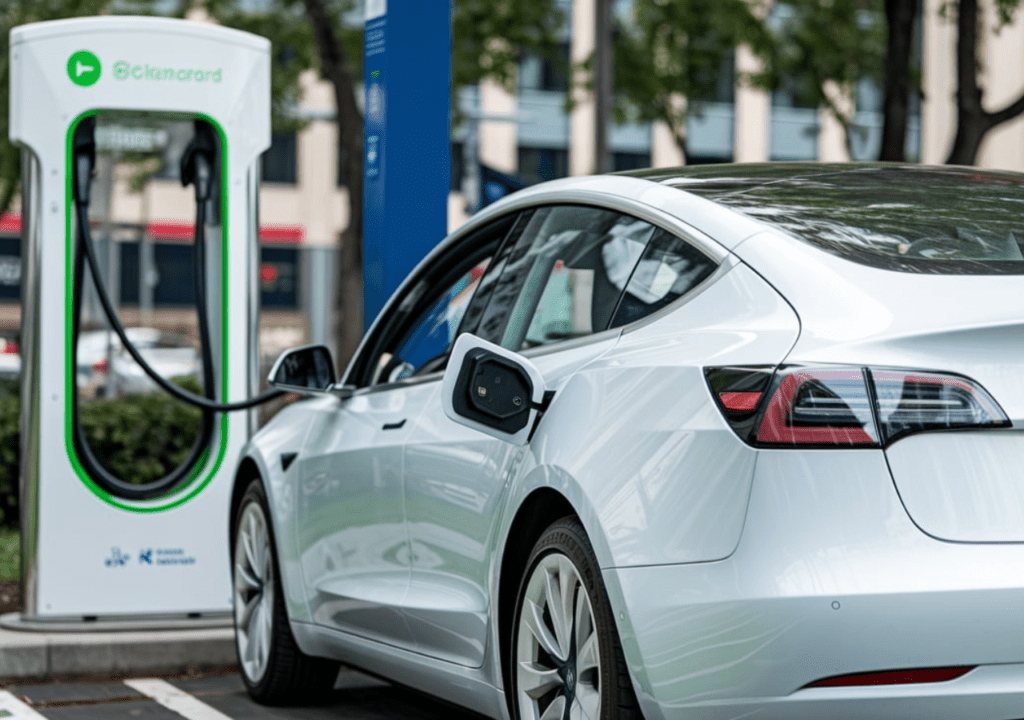With the popularity of electric vehicles (EVs), the increasing number of individuals in need calls for effective and efficient charging stations. Home and commercial property owners’ needs are different, leading to two types of installations. There is a need to understand the principal differences between residential and commercial EV charging installations as part of electrical services.
Home EV chargers tend to be more basic and less expensive, usually allowing overnight charging. On the other hand, commercial installations require more power, fast charging, many electrical upgrades, complicated permits, and lots of money, which is usually offset by government rebates and incentives to make the expensive upgrade affordable.
Comparing Residential and Commercial Electric Vehicle Charger Installations
The following segments elaborate on the most crucial elements that differentiate them.
Power Requirements: Home vs. High‑Capacity
- Home chargers operate at Level 1 (120 V) or Level 2 (240 V) and provide 1 to 11 kW. An average Level 1 plug provides only 2 to 5 miles of driving range per hour of charging, whereas Level 2 chargers provide 10 to 30 miles per hour.
- Commercial installations often use high-capacity Level 2 systems (max. 19 kW) or 50 kW to 350 kW and higher DC fast chargers. They can recharge a battery to 80% in 20–30 minutes and are suitable for public charging, fleet operation, or service stations.
Electrical System Capacity
- Homes typically use single-phase electrical systems that support around 7 kW for EV chargers. Older homes may require a service upgrade to 200 A. Electricians could also upgrade the service to 200 A on old homes to support more loads.
- Commercial locations typically require three-phase power, larger transformers, and utility company assistance, particularly for quick charging. Infrastructure demands include upgraded service panels, new conduits, cable runs, trenching, and sometimes building new electrical or mechanical rooms.
Power Needs and Charging Speed
Residential
- Level 1 (1 to 2 kW) offers gradual overnight charging.
- Level 2 (6 to 11 kW) supports full nightly recharge for most EVs.
Commercial
- Level 2 (up to 19 kW) supports multiple vehicles simultaneously.
- DC fast chargers (50 to 350 kW) enable rapid top-ups for drivers on the go.
- Charging speed depends on the EV’s battery capacity and onboard charger limitations. Some vehicles cannot accept full power from high-capacity chargers.
Location Makes a Big Difference
- Residential chargers are typically mounted in a garage or driveway. Upgrades are usually limited to the home’s electrical panel, and permitting is simpler.
- Commercial EV chargers serve public locations, offices, fleet yards, hotels, malls, or curbside. They handle higher volumes and need ADA-compliant parking spaces, grounding, lighting, signage, and safety systems. Trenching and station construction often take several weeks, unlike home installs, which require only a day.
Permits and Regulations
- Permits for residential chargers are relatively straightforward, involving building permits and electrical inspections. Local authorities treat Level 1 and Level 2 charging similarly to other home electrical projects, unless substantial service upgrades are involved.
- Commercial installations, however, are complex. They require planning approvals, environmental reviews, fire safety certification, utility interconnection agreements, signage permits, ADA compliance, and billing and access control system integration. The installation often requires engineer-stamped drawings and extensive documentation.
Installation Costs
Residential EV Charger
- The hardware and installation for home chargers vary:
- Level 1 chargers range from $300 to $1,000 for hardware alone. Level 2 chargers range from $700 to $1,800.
- The average installation cost is $800–$2,500, depending on the electrician cost, conduit, and panel work.
- Major remodels (e.g., adding a new service panel) can drive total costs to ~$10,000+.
Commercial EV Charger
- Costs are significantly higher and variable:
- Equipment and level 2 units $400–$6,500; installation $600–$12,700.
- DC fast chargers and gear range from $10,000–$40,000 (50 kW) to $30,000–$150,000+ (150–350 kW), and installation for a single DCFC is usually $21,000 and higher.
- Fleet or multi-stall stations could cost $20,000–$50,000 for four Level 2 bays.
- After electrical upgrades, trenching, network setup, and permits, installing a commercial DC fast charger can cost more than $150,000 per unit.
Maintenance and Support
- Home chargers have minimal maintenance. Occasional software updates and periodic inspections suffice. Warranty services may offer remote diagnostics. Support typically comes from the OEM or the installer.
- Commercial chargers require ongoing management: network connectivity, user authentication, billing, uptime monitoring, hotspot repairs, and preventive maintenance. These self-service units must function reliably despite varying usage and weather conditions. Redundancy and SLAs may be necessary to avoid downtime.
Government Incentives and Rebates
Residential incentives
- The United States Inflation Reduction Act provides a 30% tax credit, up to $1,000, for installing EV home chargers.
- Local utilities, states, and municipalities may offer up to $350 rebates for flat residents.
Commercial incentives
- The Federal Alternative Fuel Vehicle Refueling Property Credit provides 6–30% of the project’s cost, up to $100,000 per port, if certain wage and apprenticeship stipulations are met.
- Many states and utilities provide cash back, grants, and infrastructure incentives. Some examples include CALeVIP in California and Charge Ready NY in New York.
These incentives can significantly lower the tremendous sums required for commercial installations.
Conclusion
Home EV chargers are inexpensive and simple to install, typically permitting overnight charging with minimal modifications. Commercial installations are more expensive and include heavy electrical work, complex permits, and ongoing maintenance, but enable fast charging for many users or fleets. Both installations are a part of electrical services that benefit from government incentives and rebates. Strategic planning is essential to optimize investment, meet regulations, and ensure efficient, reliable charging.



